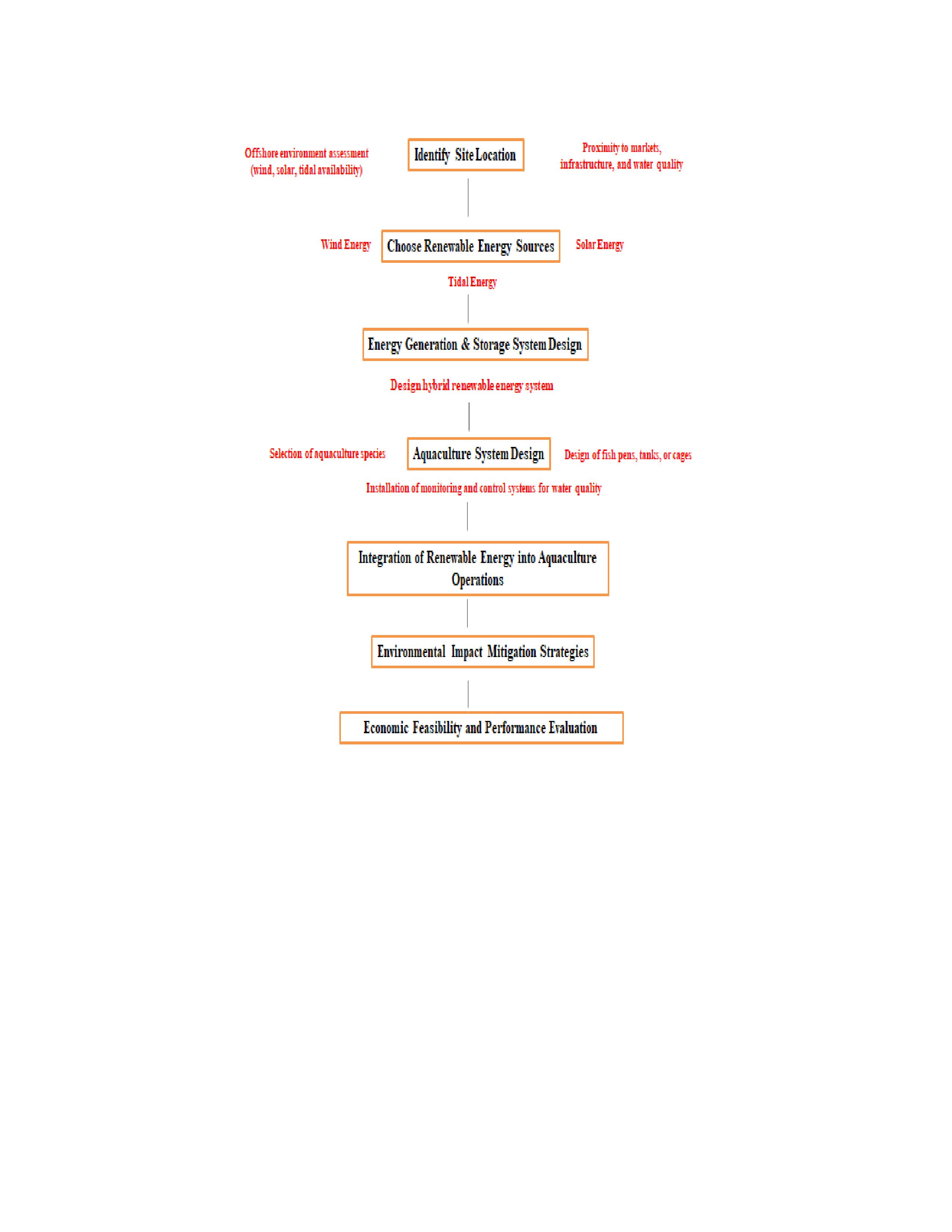
Renewable energy based solutions for offshore aquaculture provide a revolutionary solution that combats traditional fish farming's environmental issues while supplying growing seafood needs. The research details how wind energy combined with solar power and tidal power supplies energy to offshore aquaculture systems to achieve improved carbon reduction together with better nutrient transformation and reduced water contamination. The discussion analyzes floating platforms and energy harvesting units together with fish cages alongside environmental monitoring systems to demonstrate their joint function in sustainable operations. Renewable power sources can fulfill 87% of aquaculture sector energy requirements annually while decreasing carbon emissions to a 65% reduction and nitrogen discharge to 45% reduction levels. Despite initial expenses the economic analysis shows reducing operational expenditure by half and repaying investment costs within seven years. When aquaculture operations share platforms with renewable energy infrastructure, they yield both improved biodiversity and economic dual advantages. Research demonstrates the need to unite next-generation energy solutions and nutrient recycling systems with aquaculture operations to build sustainable operationally efficient solutions. The next phase of research requires optimization of flexible design approaches to suit various marine settings while developing policy guidelines that enable global adoption scale-up.
Total file downloads: 5